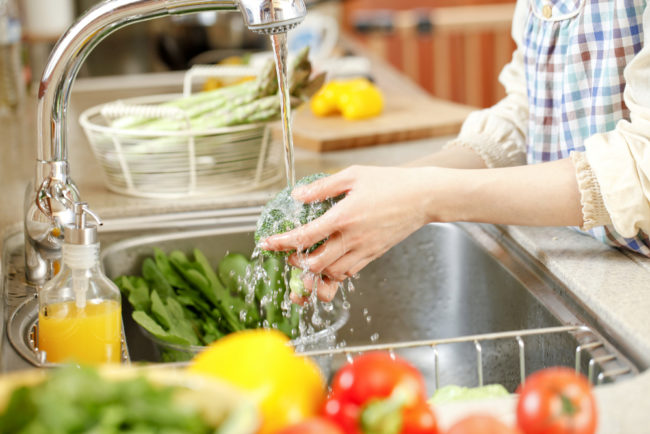With so many dishes being prepared for your Thanksgiving table, you may have pots on the stove, on the counter, in the fridge and in the oven — all at the same time. Follow these tips to make sure your food makes it safely into hungry bellies!
Each year, one in six Americans gets food poisoning, and 100,000 end up in the hospital because of it. Food poisoning doesn’t just make you feel incredibly sick. It can also have long-lasting health effects, including kidney failure, a type of chronic arthritis, and brain or nerve damage.
Food poisoning is the last thing you want to think about during the holidays. But since food plays such an important role in many holiday traditions, it’s important to make sure you’re practicing good food safety.
This holiday season, follow these four steps recommended by the U.S. Department of Health & Human Services to ensure optimal food safety:
- Clean. Bacteria live in many places, so it’s important to properly clean everything in your kitchen, including you.Anyone involved in food preparation should first wash their hands for 20 seconds using soap and water. Be sure to dry your hands thoroughly after washing, using a clean towel.After each use, wash all kitchen surfaces and utensils, including cutting boards. Use hot, soapy water to clean the items.Before serving fruits and vegetables, wash them. This includes fruits or veggies that you’ll peel before serving. But there’s no need to wash meat, chicken or turkey, or eggs. In fact, washing those foods could actually spread bacteria.
- Separate. Because bacteria can spread from one type of food to another, it’s important to keep certain types separate from others.When shopping, keep your raw meat, poultry, seafood and eggs in one section of your cart, separate from other foods. When your grocery items are bagged, these items should remain separate, since their juices can get on other foods.At home, place raw meat, chicken or turkey, and seafood in sealed containers or bags to keep them from dripping on other foods. Only keep these items in the fridge for a couple days — if they won’t be used quickly, freeze them. Eggs should be stored in their carton.When cooking, use separate cutting boards and plates for fruits and vegetables and for meat, poultry, seafood and eggs. Use one set of utensils and plates for raw food and one set for cooked foods.
- Cook. The key to safe cooking is to keep food out of the “danger zone” between 40 and 140 degrees Fahrenheit. You want to cook it to the proper temperature, then keep it hot after cooking.The best way to do this is to use a food thermometer. While you might think you can identify when a food’s “done” by how it looks, you can’t. When you think your food is done, test it with a food thermometer in the thickest part of the food. Make sure your food is cooked to the safest minimum cooking temperature.If some time will pass before dinner is served, keep foods warm in chafing dishes or a slow cooker. You want to ensure your food stays above 140 degrees after cooking.
- Chill. Dinner is over, the dishes are in the sink…and the leftovers are still on the counter? No!Bacteria can grow on perishable foods within two hours unless you refrigerate them. Once everyone has eaten all they’d like, stop and divide the leftovers into clean, shallow containers and refrigerate.For optimal cooling, keep your fridge between 32 and 40 degrees, and don’t fill it with too much stuff. Overfilling the refrigerator can make it difficult for the air to circulate.Don’t keep food in the fridge for too long, either. Know proper storage times.
If you still get struck by a bout of food poisoning over the holidays, or suffer another injury or illness, Erlanger Health offers 24/7 emergency services in several locations.







